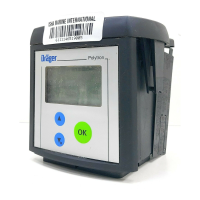The menu » Settings «
70
Submenu » Communication «
The submenu » Communication « permits various settings to by made for the
interfaces.
HART interface
This group contains the setting functions for the HART interface.
– Polling address
The polling address configures the transmitter either for the analogue mode (4
to 20 mA) or the multidrop mode. Setting the polling address to " 0 " enables
the analogue mode (4 to 20 mA). To enter multidrop mode, the polling
address must be set to a value in the range from " 1 " to " 15 ", which disables
the analogue interface and freezes it to a constant current of approx. 3 mA. In
order to enable the central controller to request the unique identifier (unam-
biguous HART address) using HART command #0, all transmitters located on
one cable trunk need to be configured with a different polling address. It is
best to assign sequential polling addresses, starting with "1".
This setting corresponds to the HART command #6 ("Write Polling Address").
Select the menu items » Settings «, » Communication «, » Hart interface «
and » Polling address « in this order, pressing the » « key after each se-
lection.
Use the » « and » « keys to set each position of the polling address
and press the » « key to confirm the setting.
Press the » « key to confirm the complete polling address.
– Unique Identifier
This function can be used to read out the unique identifier (unique HART
address), which must be known for the addressing in almost all HART com-
mands. However, knowledge of the unique identifier is necessary only for sys-
tems which are not able to read out the unique identifier with the HART
command #0 in the short-frame format or the HART command #11. The dis-
play corresponds to the address returned by the HART command #0 ("Read
Unique Identifier") or #11 ("Read Unique Identifier associated with Tag").
Select the menu items » Settings «, » Communication «, » Hart interface «
and » Identifier « in this order, pressing the » « key after each selection.
— The unique identifier will be displayed.
M
OK

